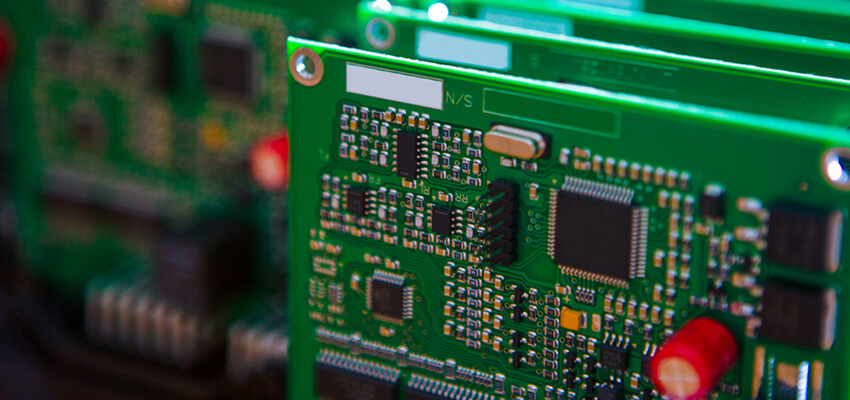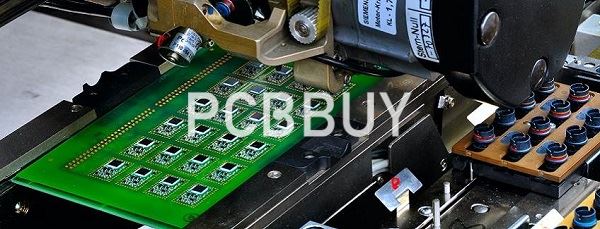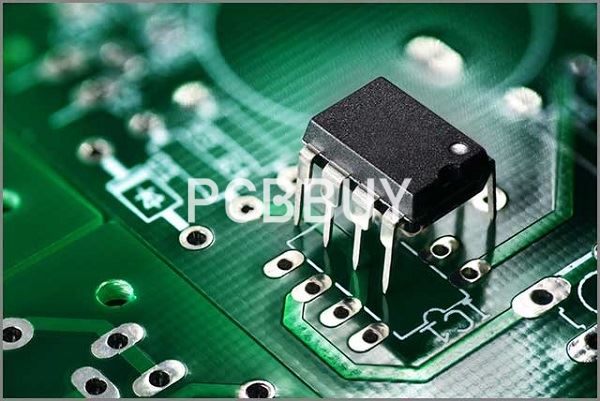PCB assembly quality control
By:PCBBUY 07/28/2021 16:37

PCB assembly drives electronics products to feature higher reliability and integrity while end product quality tends to go down if some issues are caused during SMT assembly process. How to improve the quality of PCB assembly? In this passage, we will talk about it and please read the content we prepare for you below to learn more professional information.

What are the causes to affect PCB assembly quality?
The overall process of SMT assembly mainly covers solder paste printing, placement, soldering and inspection among which solder paste printing, placement and soldering top the list.
Defects Caused in Solder Paste Printing Process
As the beginning of SMT assembly process, solder paste printing plays a direct role in determining the quality of both PCB and end product. If rigorous control isn’t applied during solder paste printing, soldering balls will possibly be caused in later procedure of SMT assembly. For example, unwetting will cause metallic particles to be oxidized or metallic particles will possibly suffer from irregular shapes due to insufficient solder paste. Else, soldering balls will be possibly aroused due to solvent flashing or metallic particle oxidization.
Defects Caused in Placement Process
Placement, also called chip mounting, is regarded as the most complicated manufacturing step as far as SMT assembly is concerned so that the level of placement indicates the performance of SMT assembly manufacturing. Therefore, the quality of chip mounting stands for the level of SMT. However, defects tend to be caused mostly in this step, leading to the highest defect rate of manufacturing equipment. For example, missing components possibly occur due to badly-performed nuzzle; component’s wrong orientation may be aroused due to the errors taking place on component suppliers; or, misplacement may be caused due to incorrect alignment.
Defects Caused in Soldering Process
Soldering refers to a process during which devices are stuck to PCB board through melting metallic solder that will be cooled down and become hardened with adhesion completed. Soldering affects the performance of electronics products to the largest extent so soldering quality improvement lays a basis to product performance guarantee. When it comes to the overall process of soldering, all essential elements have to taken into serious considerations including surface cleanness, soldering temperature setting and solder quality. The top defect caused in reflow soldering process during SMT assembly manufacturing procedure is soldering balls that are small metallic particles caused on component surface through reflow soldering. Soldering balls possibly make ICs (Integrated Circuits) shorts, directly leading assembled circuits to failure. Furthermore, if smaller PCBs have to go through second soldering, shorts will be also aroused on circuit board due to rolling soldering balls or the whole board or product will be burned down.
Apart from the aforementioned defects causes during SMT assembly process, cost control or insufficient cleaning will also lead PCBs to be degraded in performance. Too many residues on the board surface will tend to make soldering joints far from being full and bright.
How to improve PCB assembly quality?
In accordance with the causes to affect SMT assembly product quality, some measures can be summarized to improve SMT assembly product quality during manufacturing process.

Solder Paste Printing Technology and Quality Management
In terms of SMT assembly, solder paste plays a key role in assembly manufacturing. After all, 70% of quality defects in electronic products with SMT assembly applied result from low-quality solder paste printing. Thus, improving solder paste printing performance is an important measure to increase SMT assembly manufacturing quality. Specifically speaking, measures can be made centering on solder paste quality, stencil placement and printing parameter setting.
Solder Paste Quality
Prior to its application, solder paste should be placed in the fridge with the temperature of 5℃ and it can’t be taken out until it is ready for its participation in manufacturing. Once solder paste contains too much moisture, splashing will easily be caused due to vaporation, which will further lead to the generation of soldering balls. Furthermore, before its application, solder paste container should be opened in room temperature and its temperature should go up naturally. The optimal application temperature of solder paste is approximately 20℃ and humidity 30% to 50%. Therefore, both temperature and humidity have to be rigorously controlled in SMT assembly manufacturing environment.
Stencil Placement
Stencil should be correctly placed according to markers indicated on it. Alignment is usually automated achieved by printing equipment before printing so appropriate alignment parameter setting can help increasing printing quality.
Printing Parameter Setting
During the process of solder paste printing, if scraping blade moves too fast, too little solder paste will be placed onto pad, leading to defects and vice versa. The optimal moving speed of scraper should be 12 to 40mm/s. Scraping pressure should be properly set because too much scraping pressure will squeeze solder paste out with collapse occurred while too little scraping pressure will make solder paste slipping leading to stencil pollution. In addition, scraping blade route and separation speed should be appropriately set. Too long route of scraping blade will reduce manufacturing efficiency and separation speed plays a crucial role in affecting solder joint shape and a decisive role in affecting soldering quality.

Placement Technology and Quality Management
Placement technology is the core of surface mount technology. Furthermore, as components and devices become increasingly miniaturized, PCB assembly has to face up to increasing complexity and higher level of technology. Chip mounting depends on chip mounter featuring fast pick and place and fast placement. Placement quality relies on component selection, mounting position and mounting pressure. For example, component recognition is achieved by chip mounter through component size, so a tiny difference may arouse component misplacement, which will finally lead to bridging defect. In terms of placement pressure, too little pressure will possibly lead to extreme height of component while too high pressure will possibly lead to solder paste collapse, which will arouse component damage and misplacement. Furthermore, component positions have to be correct so that components can be accurately stuck to corresponding positions on board. Once tolerance is exceeded, secondary soldering has to be implemented after manual adjustment.
Soldering Technology and Quality Management
Reflow soldering performance determines the performance and quality of PCB. If PCB suffers from inappropriate design in terms of pad, stencil, board thickness etc., some defects will be met including bridging, missing components and soldering balls. Temperature curves should be scientifically set and four temperature phases are used in reflow soldering, preheating, temperature rising, reflow and cooling. The aim of preheating and temperature rising is to increase the temperature to a regulated temperature within 60 to 90 seconds, which not only reduces thermal shock to PCB and components, but makes melting solder paste partially volatilized as well. In addition, preheating and temperature rising can stop solvent from splashing due to quick temperature rising so that soldering balls can be prohibitted. Besides, stencil should be designed to be with appropriate thickness and opening size. Generally speaking, the area of stencil opening should be 90% of that of pad on PCB.
Industry Category











